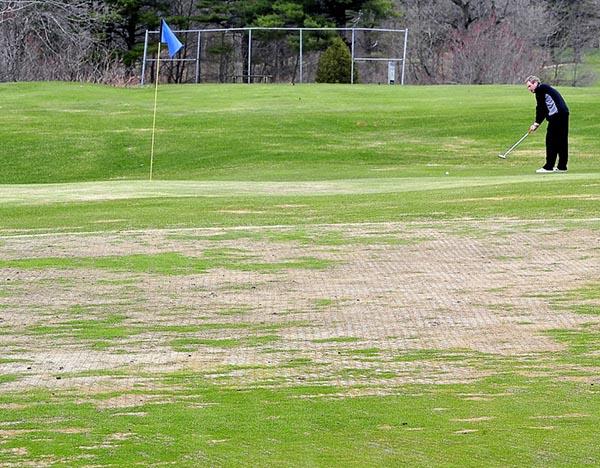It's hard to think about winter the same week the world's best golfers are competing in the U.S. Open - unless you're a superintendent growing Bermudagrass in the transition zone, then there are reminders all over the place.
 There were visible blemishes aplenty at TPC Southwind in Memphis for the FedEx St. Jude Classic and at the U.S. Women's Open at Shoal Creek in Alabama, and, now that the high spring season is over in the Myrtle Beach area, nearly a dozen courses on the Grand Strand are temporarily closed while superintendents there make repairs to their greens.
There were visible blemishes aplenty at TPC Southwind in Memphis for the FedEx St. Jude Classic and at the U.S. Women's Open at Shoal Creek in Alabama, and, now that the high spring season is over in the Myrtle Beach area, nearly a dozen courses on the Grand Strand are temporarily closed while superintendents there make repairs to their greens.The long, cold winter of 2017-18 has adversely affected countless golf courses growing Bermudagrass in the transition zone. Just a few months ago, Clemson turf pathologist Bruce Martin, Ph.D., called the winter damage throughout South Carolina the worst he'd seen in more than two decades.
In April, he estimated that 20 to 30 percent of the golf courses in Myrtle Beach had some level of damage on their putting greens, but that it would be two or three months before the full extent of the damage was known.
Today, we know.
According to The Sun News in Myrtle Beach, at least 11 courses in the area are closed, were closed or soon will be for repairs. That list, according to the newspaper, includes Glen Dornoch Waterway Links, the Tradition Club, Myrtlewood Golf Club, Indigo Creek Golf Club, the International Club, Diamondback Golf Club, Panther Run Golf Links, Long Bay Club, Lion's Paw Golf Links, Aberdeen Country Club and Sandpiper Bay Golf and Country Club.
Making matters worse has been a long, cool spring that delayed Bermuda-growing weather, Martin said.
There is enough damage at some other courses that the list of closed courses might grow.
The trials and tribulations of others would be wasted if they didn't serve as a learning opportunity for others.
Recent research at the University of Arkansas shed some light on the use of covers on ultradwarf Bermudagrass greens.
While covering greens protects them from cold weather damage, it also prevents play and requires more manpower to deploy and remove, adding to the course's operating costs.
Master's candidate Eric DeBoer looked into the effects of covers on Champion, TifEagle and MiniVerde greens at 25 degrees, 22 degrees, 18 degrees and 15 degrees Fahrenheit. According to the study, TifEagle and MiniVerde were more cold tolerant than Champion.
According to the study, Bermudagrass greens covered when temperatures reached 15 degrees survived throughout the winter with improved spring green up. Covered greens even survived two days of extreme cold temperatures where overnight lows dropped to 0 degrees on consecutive nights.
According to Martin, courses that used two layers of protection, such as a cover placed atop a blanket of pine straw that promotes airflow, came through the winter better than those with a single layer of cover.

